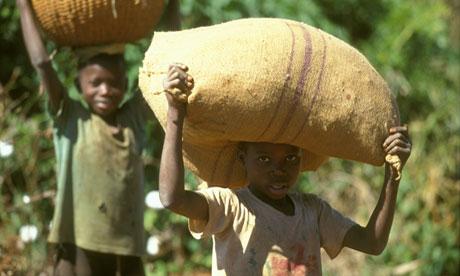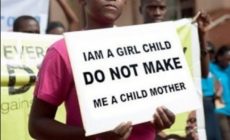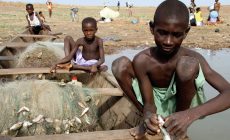Oti Region tops children’s involvement in economic activities – GSS
- Posted on
- Comment

It has emerged that the involvement of children in economic activities in the Oti Region is more than six times the national figure.
Whereas Oti Region recorded a 20.8 per cent of children’s involvement in economic activities in the 2021 National Population Housing Census (NPHC), the national figure was 3.3 per cent.
Five other regions, namely North East, Savannah, Upper West, Northern, and Upper East also recorded high figures—11.4 per cent, 9.9 per cent, 9.3 per cent, 8.6 per cent, and 6.1 per cent respectively.
Highlights
In a highlights released from the General Report by the GSS highlights from the 2021 PHC on December 16, 2021, also said among children aged 5-14 years engaged in economic activity, almost 80 per cent are involved in agriculture-related activities with the highest proportion in Savannah (89.8 per cent) and the least in Greater Accra (26.2 per cent) regions.
The highlights Economic Activity, presents statistics on the size and components of the labour force, the population outside the labour force, the employed population, the unemployed population, main occupation, main industry, employment sector and employment status.
The highlights further indicated that in the Greater Accra region, children’s involvement in economic activity is predominantly in service and sales, representing 42.6 per cent.
The highlights from the 2021 NPHC also said more than 2 in 5 (45.5 %) unemployed persons who are 15 years and older are available for work but are not seeking for employment, of which the youth (15-35 years) constitute two-thirds.
Child labour
Commenting on the involvement of children in economic activity in the country, particularly those who are engaged in child labour activities in the cocoa sector, a Cocoa Value Chain Analyst, Mr Eliseus Opoku-Boamah, called for a collaborative efforts of all players in the cocoa sector to help clamp down on child labour in the sector.
For him, uniting the forces of the cocoa sector and chocolate industry, civil society organisations, farming communities, media, government, international and donor organisations would help the country to effectively and efficiently address the menace of child labour in the cocoa sector.
He said the country also needed to set up an effective Child Labour Monitoring and Remediation Systems (CLMRS) aimed at building capacity to help identify, prevent, monitor and remediate child labour in the cocoa supply chain.
He expressed the concern that child labour and hazardous work within the Ghanaian cocoa value chain still remains a challenge.
Opoku-Boamah said risk assessment could be conducted to assess the level of risk that existed in the cocoa farming households and prioritise communities where the risk is high.
In addition, he noted, there was the need to support community-based investments and development programmes designed to address the root causes of human rights issues in areas of women empowerment, education and income.
-Graphic










 (Selorm) |
(Selorm) |  (Nana Kwesi)
(Nana Kwesi)